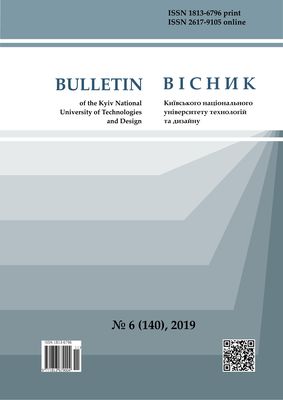ADDITIVE MANUFACTURING OF CARBON FIBRE COMPOSITES BASED ON L-POLYLACTIDE
DOI:
https://doi.org/10.30857/1813-6796.2019.6.10Keywords:
L-polylactide (PLLA), carbon fiber, additive manufacturing, fiber orientation, specific strengthAbstract
Study of the FFF additive manufacturing process of composite material based on L – polylactide (PLLA) with ultra-short carbon fibers. Tensile strength and elongation at break for all test specimens were determined according to ISO 527. Tensile modulus - ASTM D638-10, specimen density - PN-EN ISO 1183, microscopic examination - according to ASTM E2015 - 04 (2014). Charpy Shock Tests ISO 179 and ASTM D256. Bending test method ISO 178 and ASTM D 790. The rational modes of FFF additive manufacturing (AM) of carbon fiber composite based on PLLA was established. Properties of carbon fiber PLLA and unfilled PLLA was determinated for AM formed samples and injection molded samples. Carbon fiber composites have significantly higher flexural and tensile module us values compared to the original L-polylactide, which is due to the effect of polymer matrix reinforcement by the fibrous component. However, finished products obtained by AM PLLA carbon composite have a lower impact strength and tensile strength, which is likely to be due to the fact that the carbon fibers are short (50-60 mkm) and have a cavitations effect during injection molding and AM. Density of carbon fiber filled PLLLA was lower the theoretically calculated value for filament material as well for injection molded and AM formed samples. Density reduction probably the main cause of impact properties deterioration due to cavity forming around carbon fibers. Density and tensile properties of AM formed samples can be changed by AM slicing parameter – extrusion multiplier. Cavitation effect for carbon fiber composites observed for PLLA composite in form AM filament, injection molded parts and AM formed samples. Cavity forming was confirmed by optical microscopy and density measurement. Possible reason for cavity forming is orientation deformation of the fiber in polymer matrix during the formation of the filament. The effect of cavitation also persists in the AM of products from carbon composites due to the passage of the orientation at the exit of the printer nozzle. The possibility of regulating the density and physical and mechanical properties of carbon composite products obtained by the additive manufacturing method has been established. Selection of rational values of the extrusion multiplier and the direction of the layers in the additive molding allows you to create products with the desired complex of properties.

